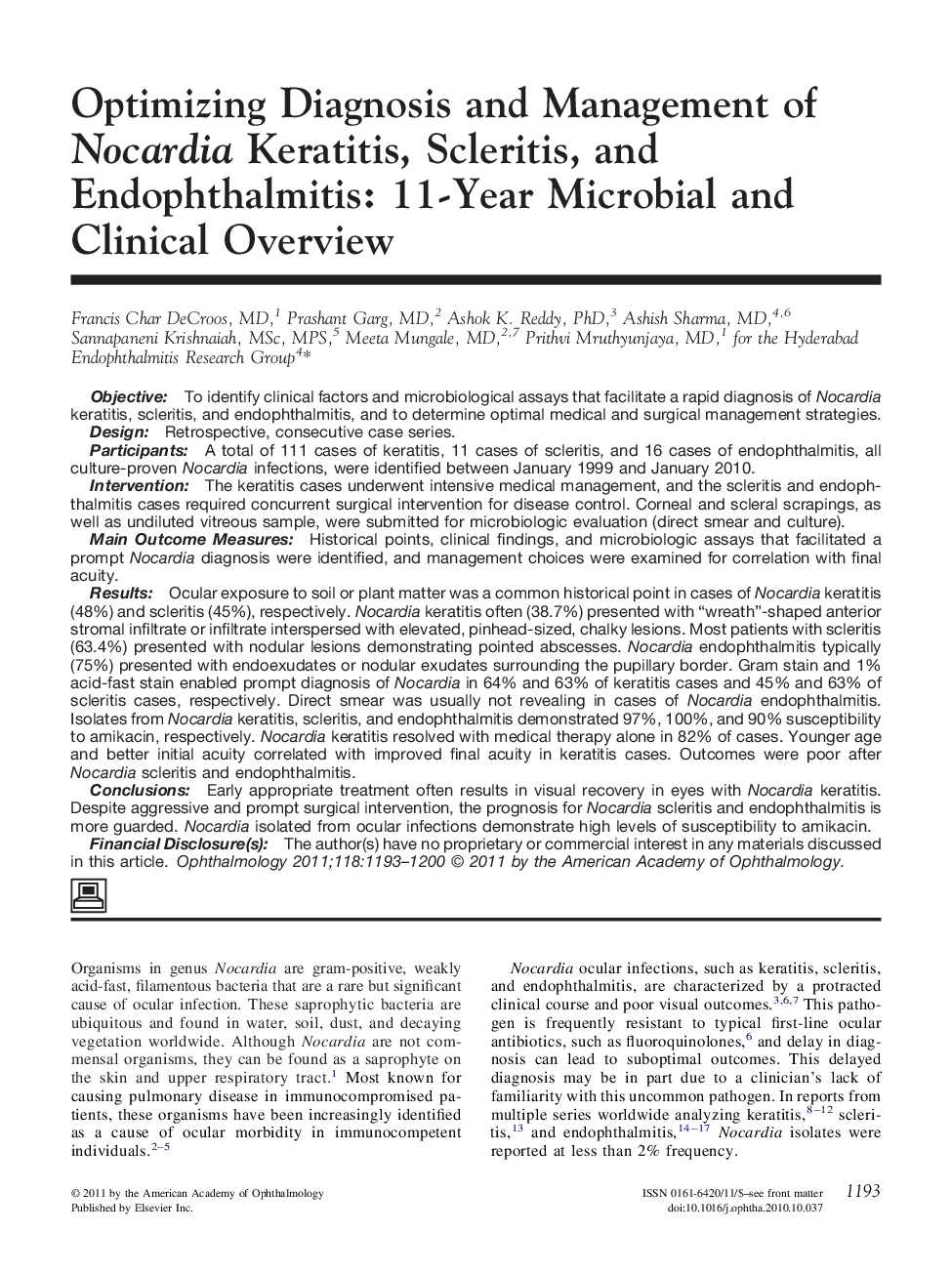| Article ID | Journal | Published Year | Pages | File Type |
|---|---|---|---|---|
| 4027980 | Ophthalmology | 2011 | 8 Pages |
ObjectiveTo identify clinical factors and microbiological assays that facilitate a rapid diagnosis of Nocardia keratitis, scleritis, and endophthalmitis, and to determine optimal medical and surgical management strategies.DesignRetrospective, consecutive case series.ParticipantsA total of 111 cases of keratitis, 11 cases of scleritis, and 16 cases of endophthalmitis, all culture-proven Nocardia infections, were identified between January 1999 and January 2010.InterventionThe keratitis cases underwent intensive medical management, and the scleritis and endophthalmitis cases required concurrent surgical intervention for disease control. Corneal and scleral scrapings, as well as undiluted vitreous sample, were submitted for microbiologic evaluation (direct smear and culture).Main Outcome MeasuresHistorical points, clinical findings, and microbiologic assays that facilitated a prompt Nocardia diagnosis were identified, and management choices were examined for correlation with final acuity.ResultsOcular exposure to soil or plant matter was a common historical point in cases of Nocardia keratitis (48%) and scleritis (45%), respectively. Nocardia keratitis often (38.7%) presented with “wreath”-shaped anterior stromal infiltrate or infiltrate interspersed with elevated, pinhead-sized, chalky lesions. Most patients with scleritis (63.4%) presented with nodular lesions demonstrating pointed abscesses. Nocardia endophthalmitis typically (75%) presented with endoexudates or nodular exudates surrounding the pupillary border. Gram stain and 1% acid-fast stain enabled prompt diagnosis of Nocardia in 64% and 63% of keratitis cases and 45% and 63% of scleritis cases, respectively. Direct smear was usually not revealing in cases of Nocardia endophthalmitis. Isolates from Nocardia keratitis, scleritis, and endophthalmitis demonstrated 97%, 100%, and 90% susceptibility to amikacin, respectively. Nocardia keratitis resolved with medical therapy alone in 82% of cases. Younger age and better initial acuity correlated with improved final acuity in keratitis cases. Outcomes were poor after Nocardia scleritis and endophthalmitis.ConclusionsEarly appropriate treatment often results in visual recovery in eyes with Nocardia keratitis. Despite aggressive and prompt surgical intervention, the prognosis for Nocardia scleritis and endophthalmitis is more guarded. Nocardia isolated from ocular infections demonstrate high levels of susceptibility to amikacin.Financial Disclosure(s)The author(s) have no proprietary or commercial interest in any materials discussed in this article.
